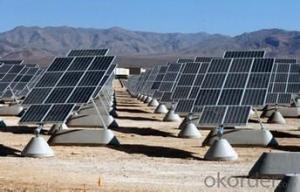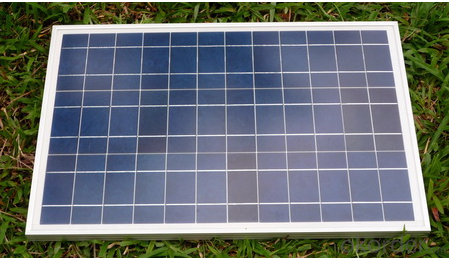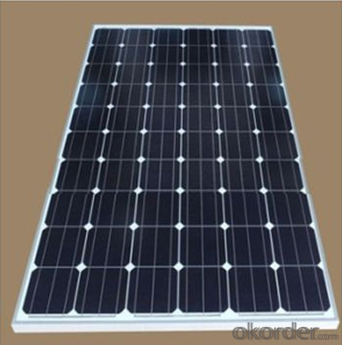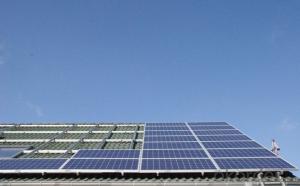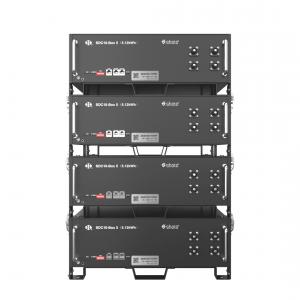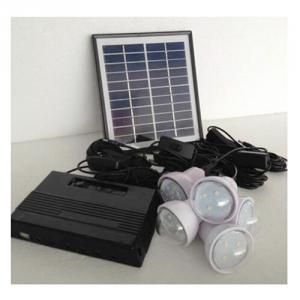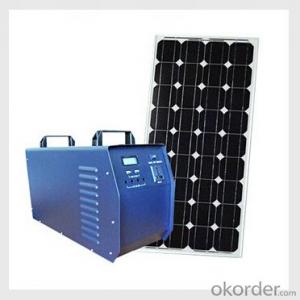Skagit Solar Energy Systems:15kw Solar Home Solution with 25 Years Quality Assurance
- Loading Port:
- Shanghai
- Payment Terms:
- TT OR LC
- Min Order Qty:
- 1 pc
- Supply Capability:
- 5000 pc/month
OKorder Service Pledge
OKorder Financial Service
You Might Also Like
Specification
15KW Solar Home Solution with 25 years Qualtiy Assurance
Production description
a solar array only encompasses the ensemble of solar panels, the visible part of the PV system, and does not include all the other hardware, often summarized as balance of system (BOS). Moreover, PV systems convert light directly into electricity and shouldn't be confused with other technologies, such as concentrated solar power or solar thermal, used for heating and cooling.
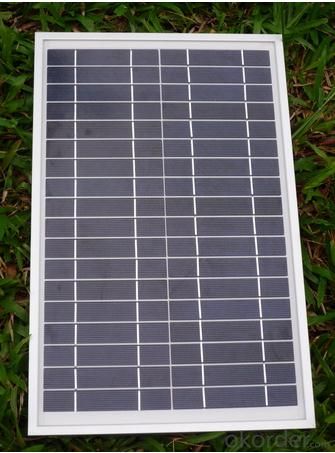
Feature
1.High conversion efficiencies resulting in superior power output performance.
2.Outstanding power output even in low light or high temperature conditions
3.Optimized design for ease of soldering and lamination
4.Long-term stability,reliability and performance
5.Low breakage rate
6.Color uniformaity
Physical characteristic
1. Rigorous quality control meets the highest international standards.
2. High-transmissivity low-iron tempered glass, strong aluminium frame.
3. Using UV-resistant silicon.
4. IS09001/14001/CE/TUV/UL
- Q: How do solar energy systems impact energy storage technologies?
- Solar energy systems have a significant impact on energy storage technologies by creating a need for efficient and reliable storage solutions. As solar power generation is intermittent and dependent on weather conditions, energy storage technologies are crucial for storing excess energy produced during peak periods and releasing it during periods of low or no sunlight. This demand has driven advancements in energy storage, leading to the development of more efficient and cost-effective solutions like batteries and pumped hydro storage, ultimately enhancing the integration and reliability of solar energy systems.
- Q: Are there any tax credits available for installing solar energy systems?
- Yes, there are tax credits available for installing solar energy systems. These credits, known as solar investment tax credits (ITCs), provide a financial incentive for homeowners and businesses to switch to solar power. The federal government offers a 26% tax credit for residential and commercial solar installations through 2022. However, it's important to note that state and local governments may also offer additional incentives and tax credits for solar energy systems.
- Q: Can solar energy systems be used for powering off-grid eco-sanctuaries?
- Yes, solar energy systems can definitely be used for powering off-grid eco-sanctuaries. In fact, they are an ideal solution for such locations as they provide a sustainable and renewable energy source. Solar panels can generate electricity during the day, and excess energy can be stored in batteries for use at night or during cloudy periods. This not only reduces reliance on traditional power sources but also helps to minimize the environmental impact of these sanctuaries by reducing carbon emissions.
- Q: Can solar energy systems be used in mining operations?
- Yes, solar energy systems can be used in mining operations. Solar power can provide a sustainable and reliable source of electricity for various mining activities, such as powering equipment, lighting, ventilation, and processing plants. It reduces dependence on traditional fossil fuel-based energy sources, lowers operational costs, and minimizes environmental impacts. However, the feasibility and effectiveness of solar energy systems in mining operations depend on factors like location, energy demands, and technical considerations.
- Q: How does the efficiency of solar panels vary across different roof types?
- The efficiency of solar panels can vary across different roof types due to factors such as the angle and orientation of the roof, shading from surrounding trees or buildings, and the presence of any obstructions or obstacles. A roof with a steep angle and south-facing orientation tends to be more efficient for solar panels as it receives maximum sunlight throughout the day. Additionally, a roof with minimal shading and obstruction allows for better sunlight exposure, resulting in higher efficiency. However, roofs with flat angles, north-facing orientation, or significant shading may experience decreased efficiency as they receive less direct sunlight. Ultimately, the efficiency of solar panels on different roof types depends on these factors and can vary accordingly.
- Q: Can solar energy systems be used for powering water pumps?
- Yes, solar energy systems can be used to power water pumps. Solar-powered water pumps, also known as solar water pumping systems, use the energy from the sun to operate water pumps, providing a sustainable and renewable source of power for pumping water. These systems are particularly beneficial in remote or off-grid areas where access to electricity is limited or unavailable.
- Q: How do solar energy systems affect the reliability of electricity supply?
- Solar energy systems can enhance the reliability of electricity supply by diversifying the energy sources and reducing dependence on traditional power grids. With solar panels generating electricity directly from sunlight, these systems can provide a stable and consistent power supply, especially during daylight hours. Additionally, when integrated with battery storage, solar energy systems can store excess energy for use during nighttime or periods of low sunlight, further improving reliability.
- Q: Can solar energy systems be used for powering manufacturing facilities?
- Manufacturing facilities can definitely employ solar energy systems to power their operations. In fact, many manufacturing facilities worldwide are already taking advantage of solar energy to fulfill their power needs. Installing solar energy systems, like photovoltaic (PV) panels, on the roofs or surrounding areas of manufacturing facilities allows for the generation of clean and renewable electricity. This electricity can then be used to operate various processes and equipment within the facility. There are several advantages associated with using solar energy systems for manufacturing facilities. Firstly, solar energy is a sustainable and renewable power source that does not deplete natural resources or contribute to climate change. By utilizing solar power, manufacturing facilities can significantly reduce their carbon footprint and contribute to a greener and more sustainable future. Secondly, solar energy systems provide a consistent and reliable source of electricity, which is crucial for manufacturing facilities that require uninterrupted power supply for their operations. By generating their own electricity through solar power, these facilities can reduce their dependence on the grid and avoid potential disruptions or outages. Moreover, solar energy systems help manufacturing facilities save on energy costs in the long run. While the installation costs of solar panels may initially be high, the operational costs are significantly lower compared to traditional energy sources. Once the solar energy system is in place, the facility can benefit from free sunlight, leading to savings on electricity bills over time. It is important to note that the feasibility of using solar energy systems for manufacturing facilities may vary depending on factors such as the facility's size, available space for solar panel installation, and energy requirements of manufacturing processes. However, advancements in solar technology and decreasing costs of solar panels are making it increasingly economically viable and environmentally responsible for more manufacturing facilities to switch to solar energy systems. In conclusion, solar energy systems can effectively power manufacturing facilities, offering various benefits including sustainability, reliability, and cost savings. As the world moves towards a cleaner and more sustainable energy future, solar power presents a compelling solution for manufacturing facilities seeking to reduce their environmental impact while maintaining a dependable source of electricity.
- Q: What is the lifespan of a solar energy system?
- The lifespan of a solar energy system typically ranges from 25 to 30 years.
- Q: Can solar energy systems be used in areas with frequent snowfall?
- Yes, solar energy systems can still be used in areas with frequent snowfall. While snow can reduce the efficiency of solar panels, it does not render them completely useless. Proper design and maintenance can help ensure that snow is quickly cleared from the panels, allowing them to continue generating electricity. Additionally, advancements in technology and the use of tilt mounting systems can also improve their performance in snowy conditions.
Send your message to us
Skagit Solar Energy Systems:15kw Solar Home Solution with 25 Years Quality Assurance
- Loading Port:
- Shanghai
- Payment Terms:
- TT OR LC
- Min Order Qty:
- 1 pc
- Supply Capability:
- 5000 pc/month
OKorder Service Pledge
OKorder Financial Service
Similar products
Hot products
Hot Searches
Related keywords
